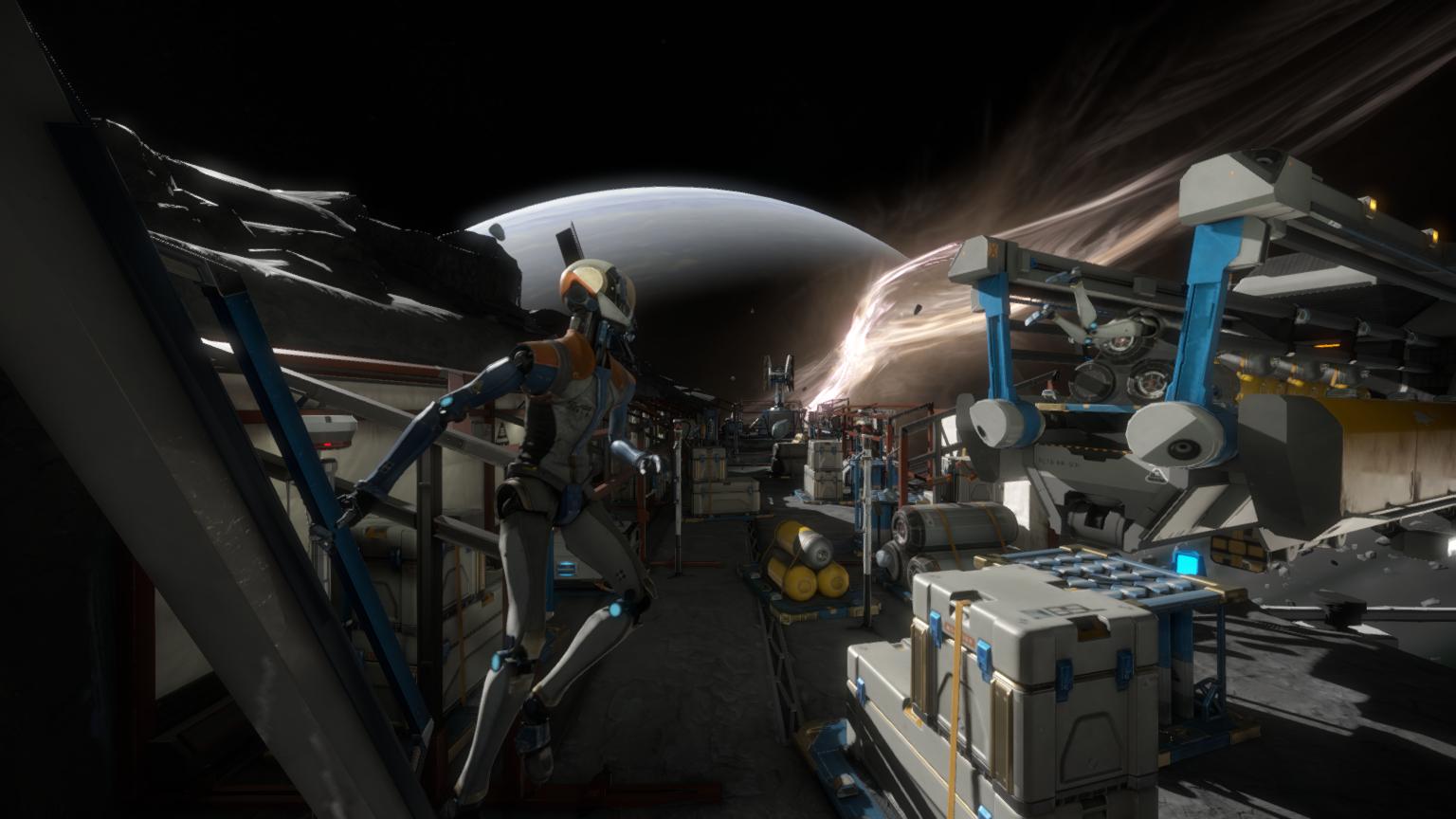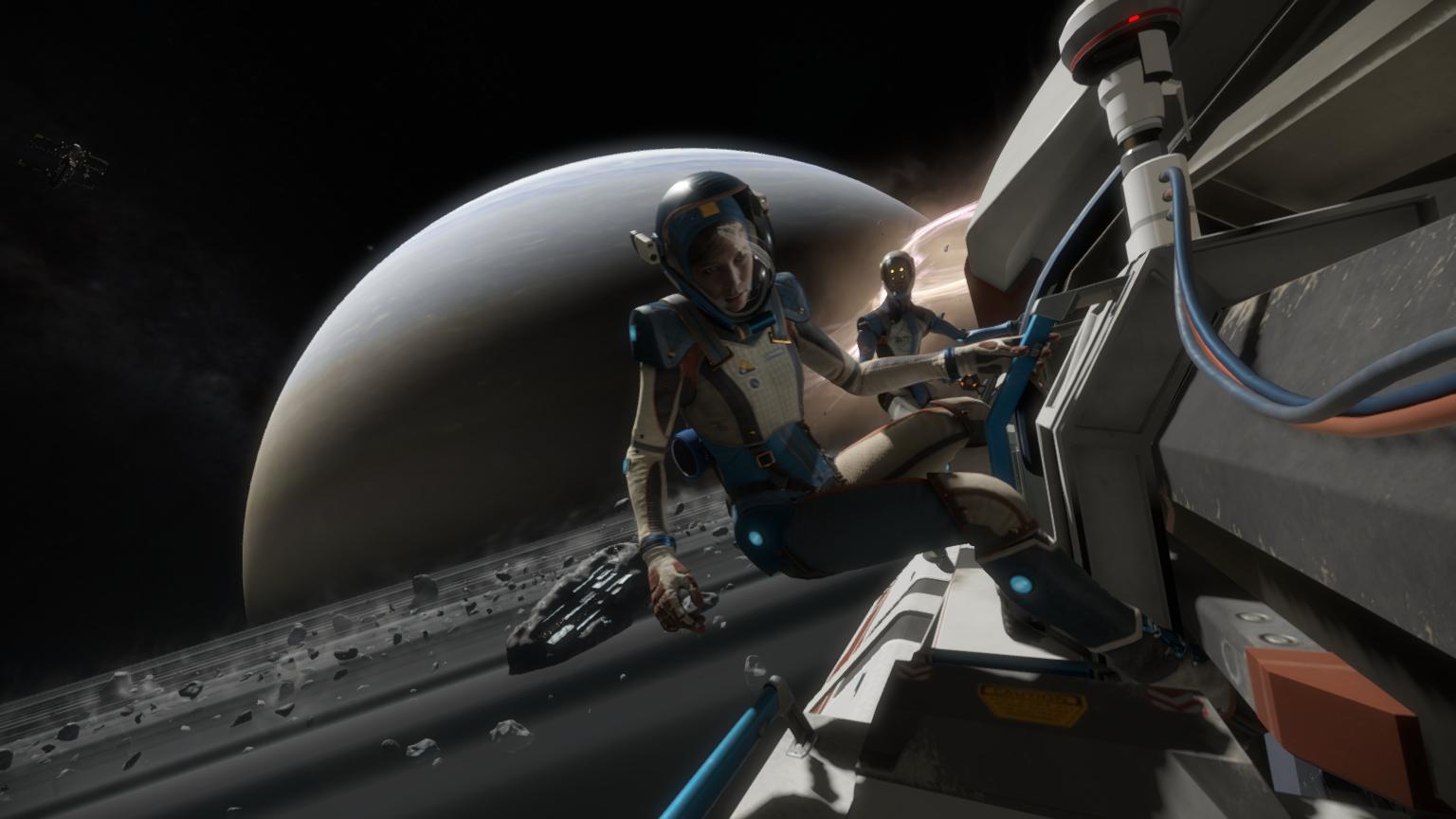'Lone Echo': Brutal VR Space Ultimate Frisbee (Hands On)
Ready At Dawn’s Lone Echo was, along with Robo Recall, one of the most talked about new games being showcased here at Oculus Connect 3 this week. The short demonstration experience provided a chance to see the mechanics of this game, which takes place in space (on Saturn), with you as a robot solving a few problems that arise. But beyond this (although News Director Seth Colaner and I didn’t get a chance to try it) is a multiplayer, five-on-five robot sports competition, featuring discs that you attempt to toss through a goal. Not unlike a game of brutal VR space ultimate frisbee.
In the demo, you are a robot. You maneuver around a space station, floating in zero gravity, to fix a sensor array, replacing its fuse; and then you have to get in a transport vehicle to rescue your partner who’s had an accident at the Kronos II space station. Those are the missions, but how you accomplish it is where the fun starts.
First off, you feel as if you’re floating in space. Your robot body rises, and you’ve got two forms of locomotion at your disposal: You have wrist-mounted thrusters that you can engage (using the A and X buttons) to move you through open space, or you can grab surfaces and objects and push and pull your way around.
What’s most interesting is that while you’re moving, you can use the Touch controllers for direction, moving left or right, up or down. I didn’t try this, but I was told after my demo that I could have slowed my approach to an object or a surface by pointing behind me, essentially thrusting down, rather than floating in and smashing, or – as I often did – reaching out to use the surface to stop my forward motion.
So many VR games use some form of teleportation to reduce nausea from movement, especially in first person experiences. This game keeps the motion, and although I suspect some people will feel some discomfort, I did not. [Editor's Note: I, Seth, did have some issues, especially when my robot body drifting through surfaces that should have been solid.] But the motion is pretty important to the game. You are in space, and feeling yourself float is vital to the immersion.
Another interesting design choice was the ability to see your entire robot body, down to the servos and actuators in your hands, arms, and legs. Most Rift/Touch VR games show you your hands and nothing else. (An aside here: I attended the Avatar VR session, where Oculus product managers explained that this was a very conscious choice, simply because precise full body representation is incredibly difficult to do, and is not a problem that can be solved today. More on that when I’ve had a chance to digest and provide that information.) I didn’t find myself looking at my arms and legs often, but when I did, they didn’t really track well to my hand movements.
Ready At Dawn also used the capacitive touch capability on the Touch controllers to great effect. One of the things we learned this week during some of the deep-dive sessions is that many of the buttons use capacitive touch, which enables more subtle gesture detection. (The triggers, on the other hand, are analog.) For example, in Lone Echo, you’ve got a special tool on your virtual wrist that, when enabled through a touch gesture (but not a button or trigger press), enables a laser cutter, which I needed to help my partner remove her trapped leg before explosive debris crashed down on her.
Get Tom's Hardware's best news and in-depth reviews, straight to your inbox.
The company doesn’t have a release date for Lone Echo, and the title will not be part of the Touch release schedule. Unlike most of the games we tried, this used an internal Ready At Dawn engine.
Here's a trailer, showing most of the game mechanics.


